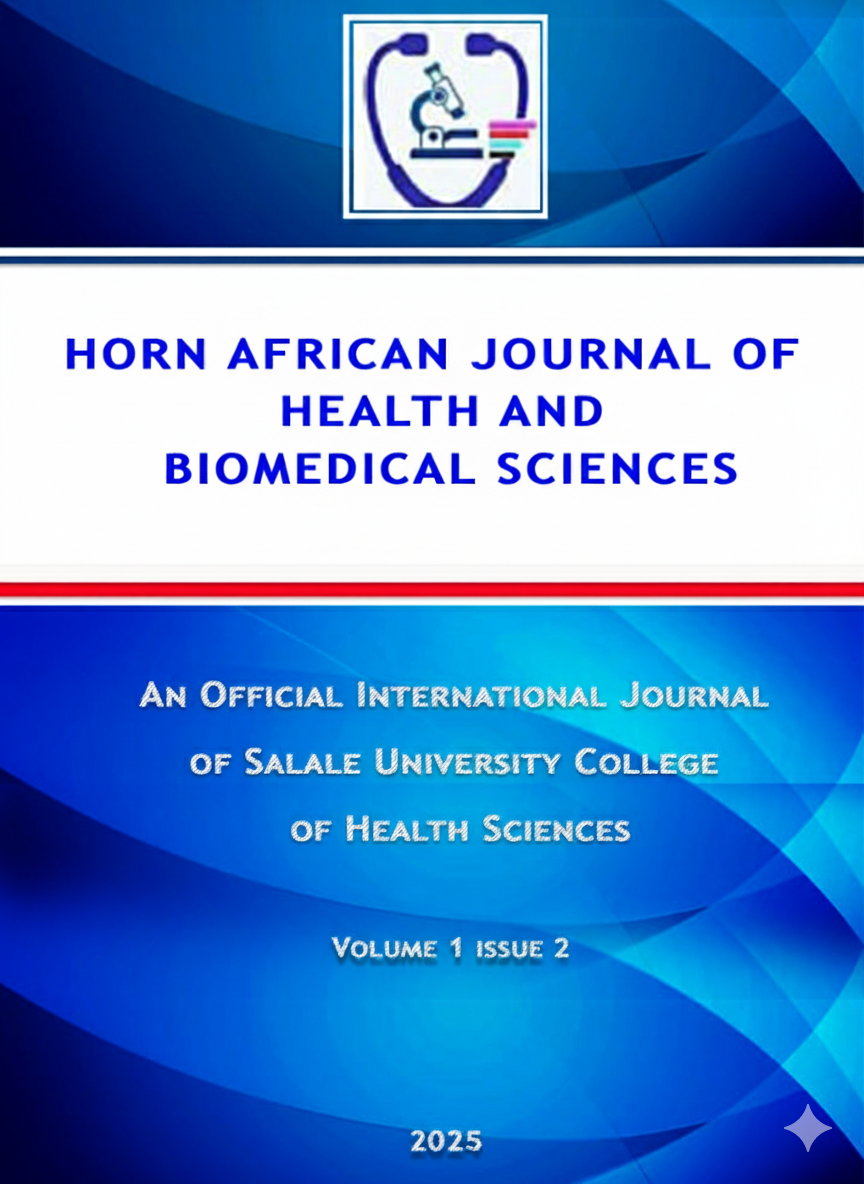Prevalence of undernutrition and associated factors among pregnant women in Nekemte town, Western Oromia, Ethiopia
undernutrition, pregnant women, associated factors
DOI:
https://doi.org/10.70215/hajhbs.v1i2.74Keywords:
undernutrition, associated factors, pregnant women, EthiopiaAbstract
Background: Pregnant women in developing countries, including Ethiopia, are suffering from undernutrition because of their physiological requirements. However, little information is known about undernutrition and major influencing factors among pregnant women in the study area. Thus, this study was planned to assess undernutrition (mid-upper arm circumference) and its main associated factors among pregnant women in Nekemte town, Western Oromia, Ethiopia.
Methods: A community-based cross-sectional study was conducted in Nekemte town from June 8 to July 12, 2023. A simple random sampling method was used to select 579 study participants. Data were collected and analyzed using SPSS version 25. Logistic regression analyses were used to determine the degree of association between dependent and independent variables. Statistical significance was declared at a p-value < 0.05 with a 95% confidence interval (CI).
Results: Pregnant women who had mid-upper arm circumference less than 23 cm were 22.8%. Variables such as household food insecurity (AOR = 2.0; 95% CI, 1.2–3.2), poor dietary intake (AOR = 2.4; 95% CI, 1.5–3.8), poor wealth index (AOR = 4.6; 95% CI, 2.9–7.3), history of abortion (AOR = 2.6; 95% CI, 1.5–5.6), and family size > 5 (AOR = 2.6; 95% CI, 1.6–4.0) were significantly associated factors with undernutrition.
Conclusions: The prevalence of poor mid-upper arm circumference in this study was lower compared to previous studies reported from Ethiopia. The intervention that targets household food insecurity, poor dietary intake, poor economic status, history of abortion, and large family size are required to ensure the nutritional status of pregnant women.





